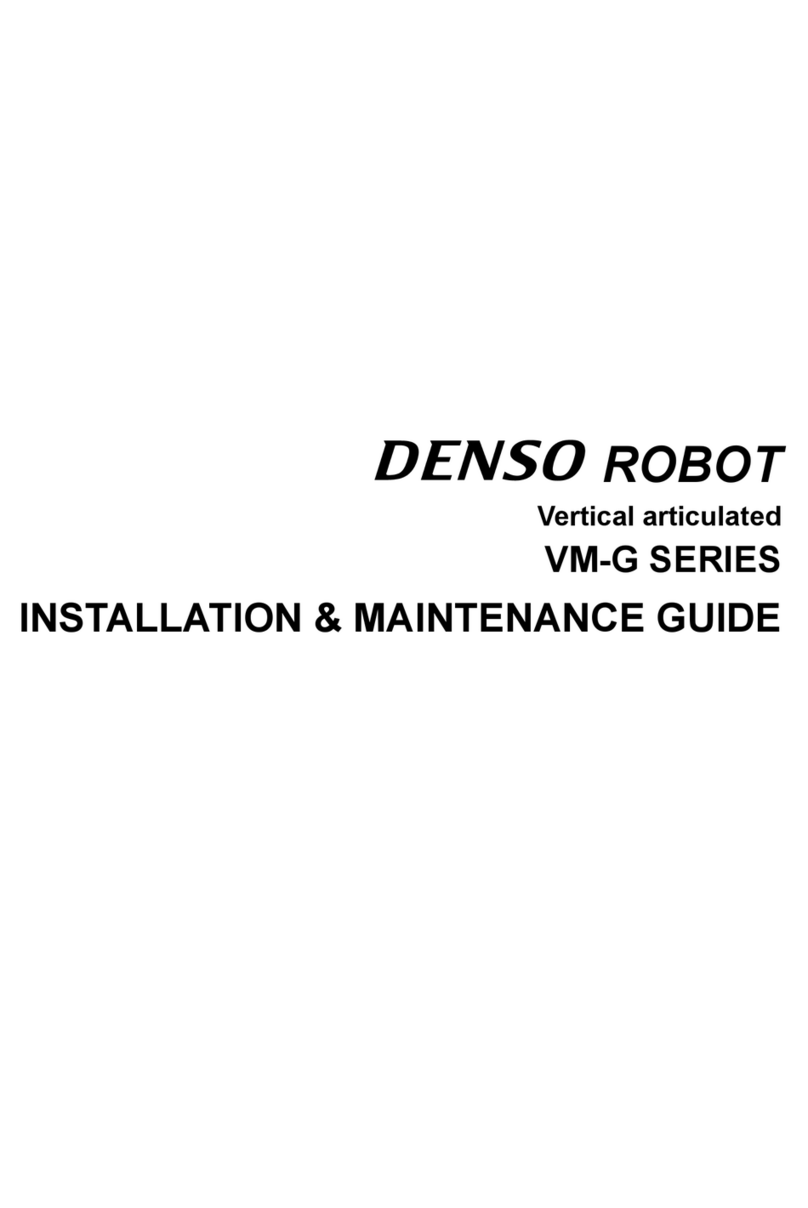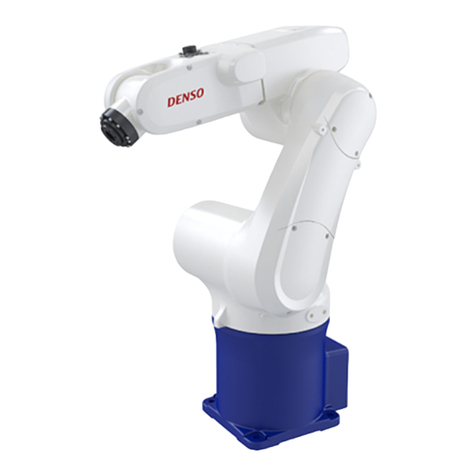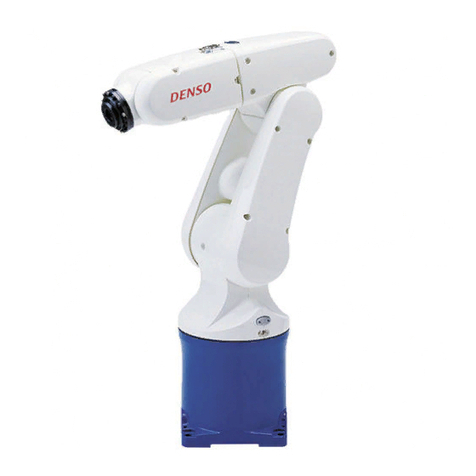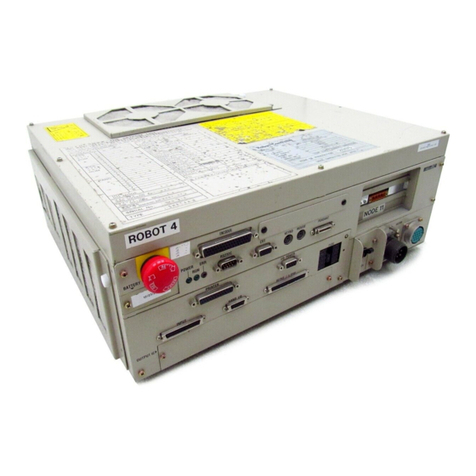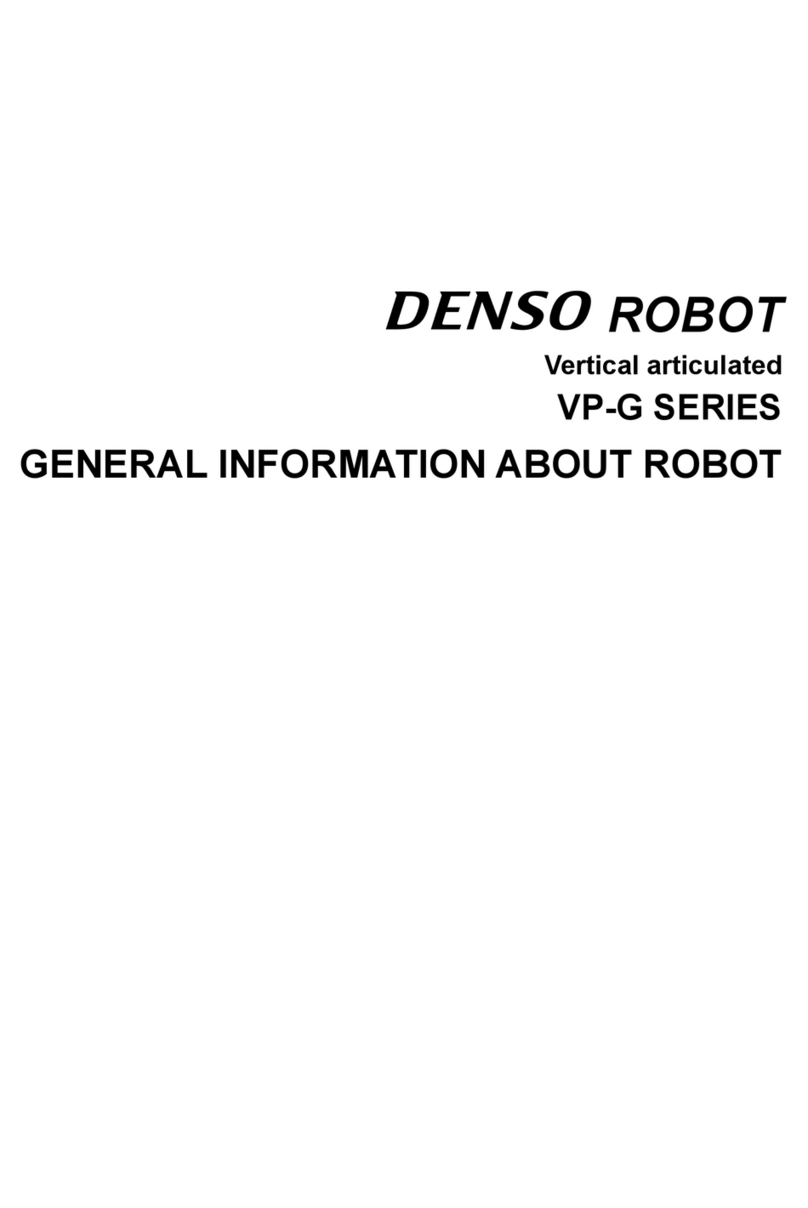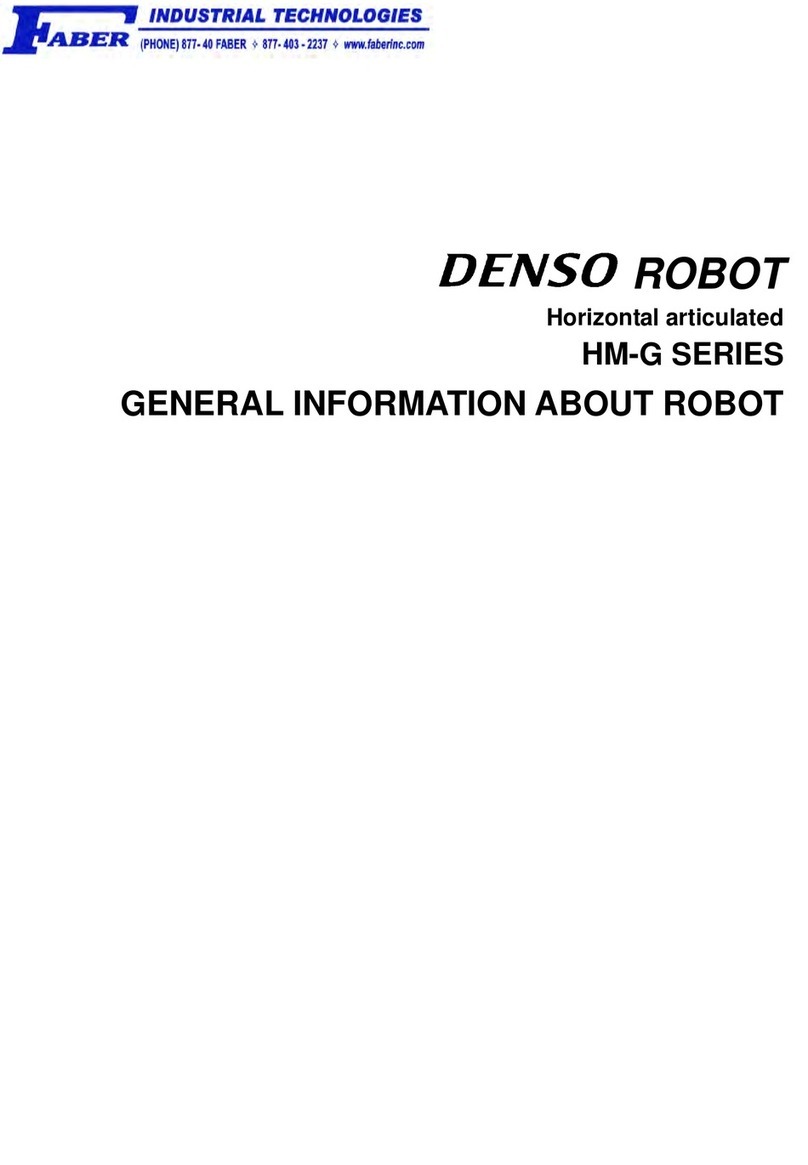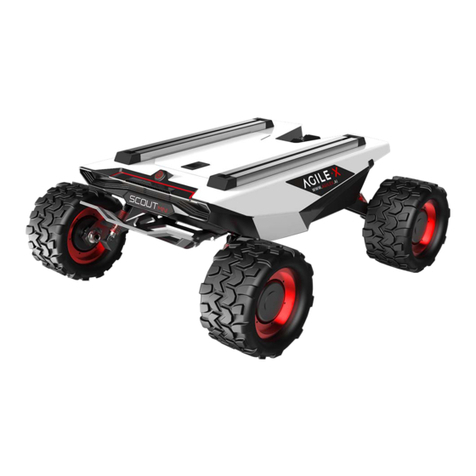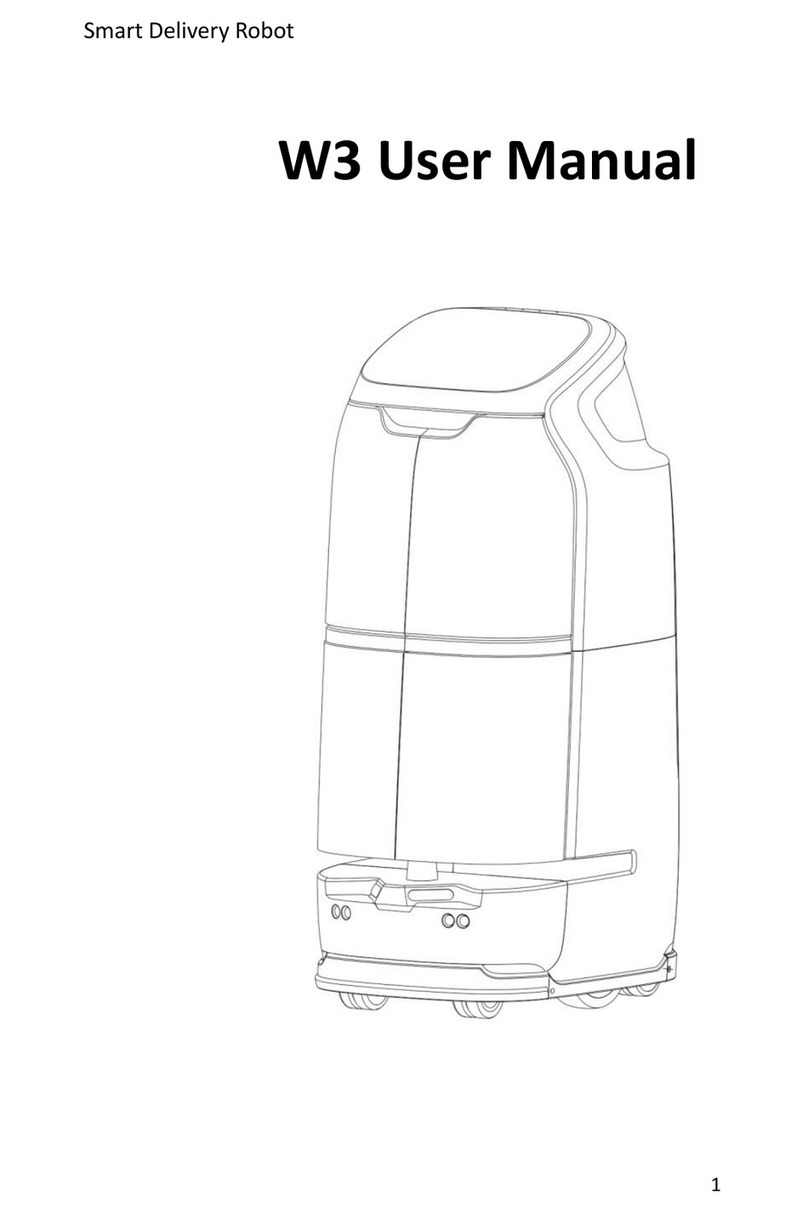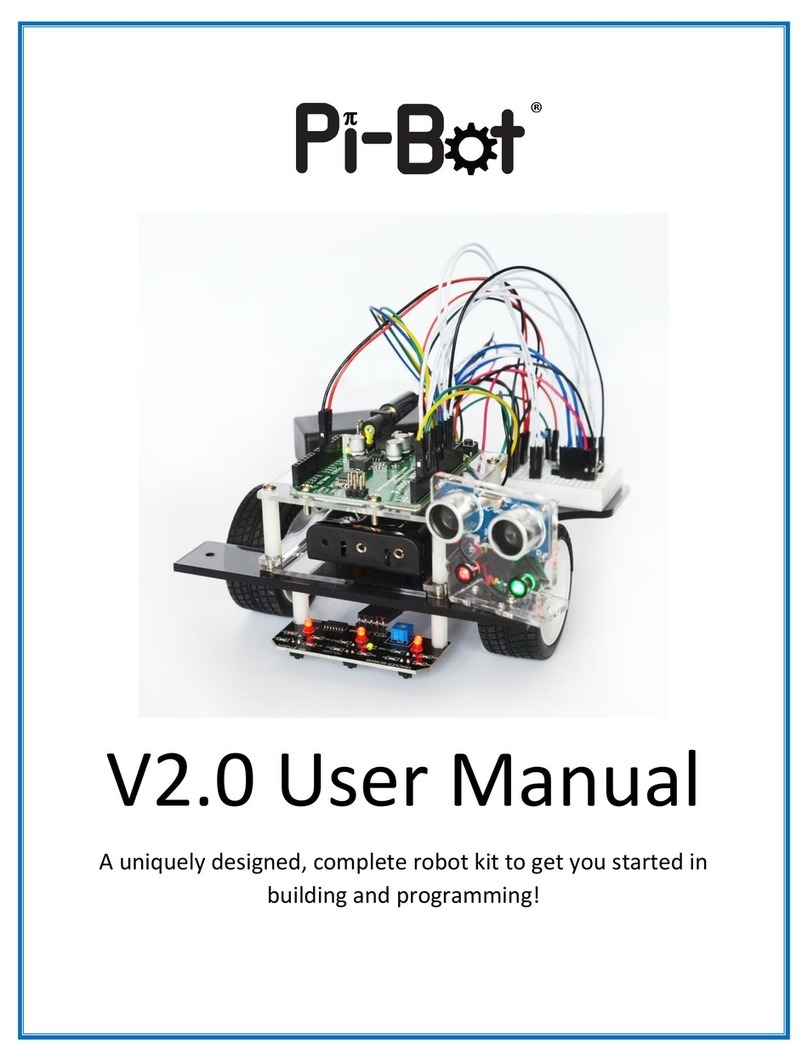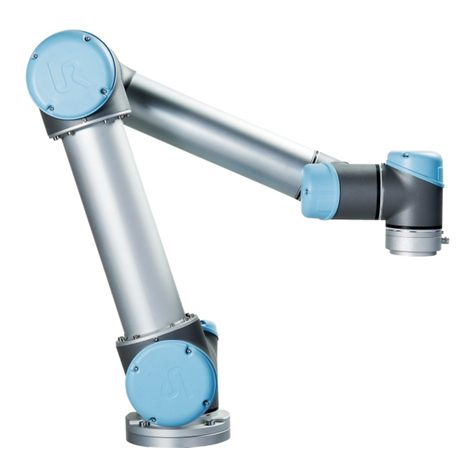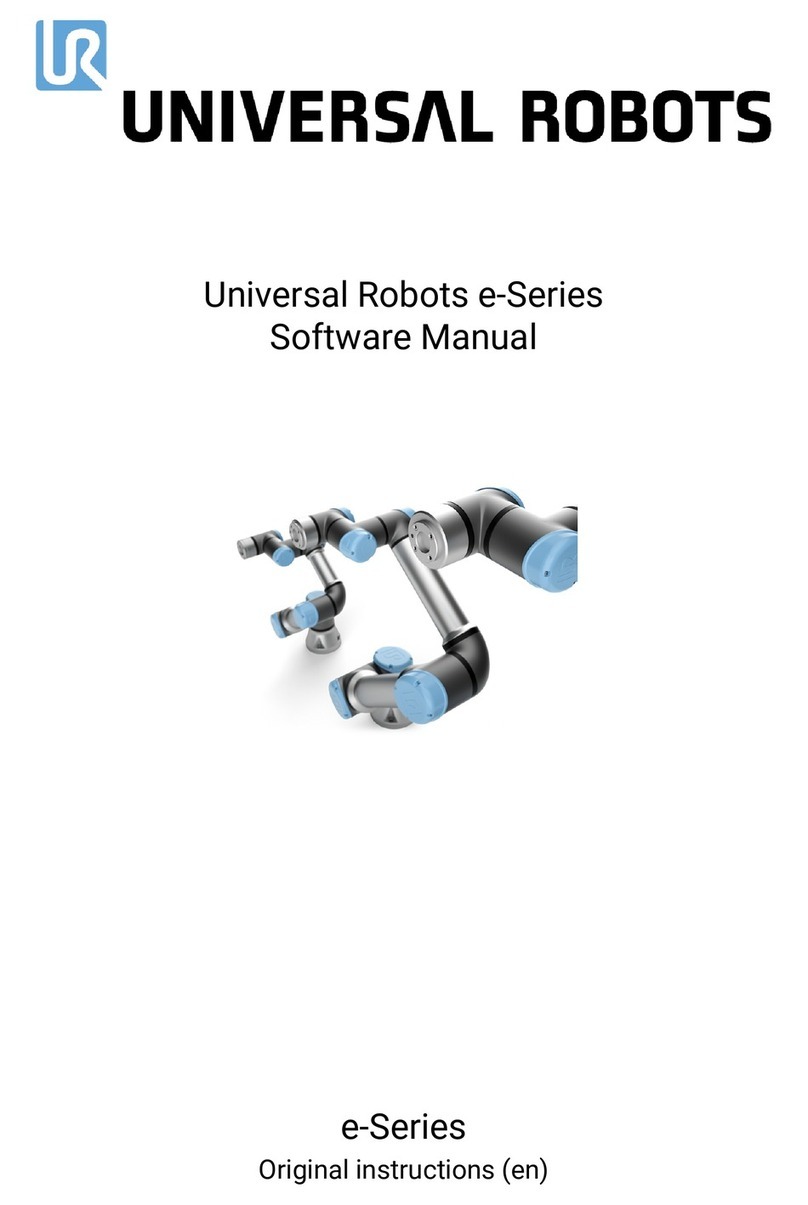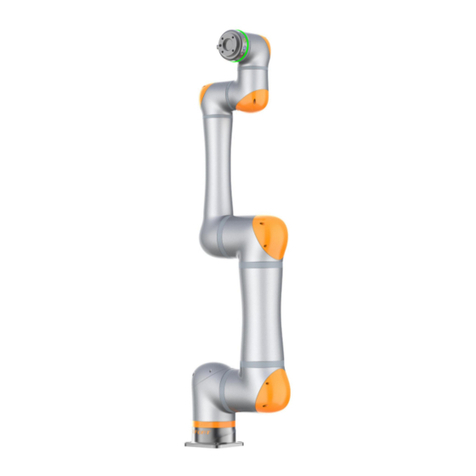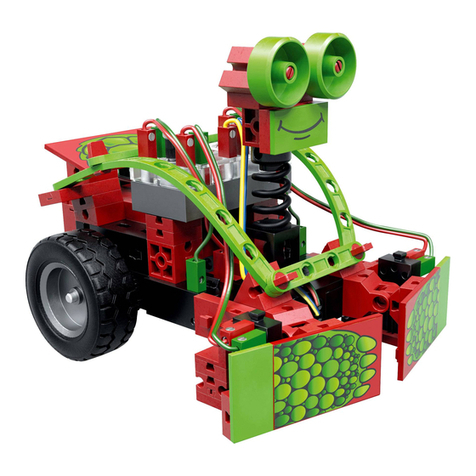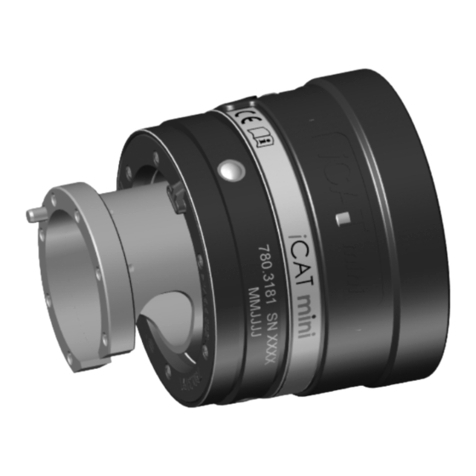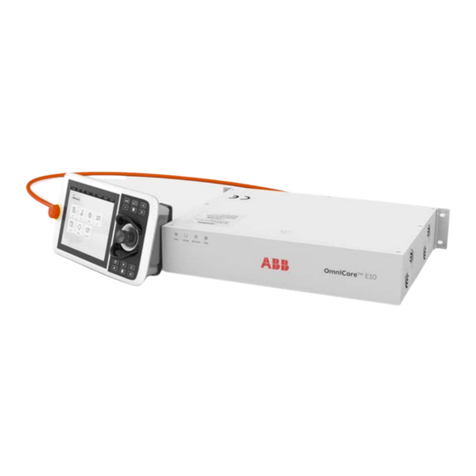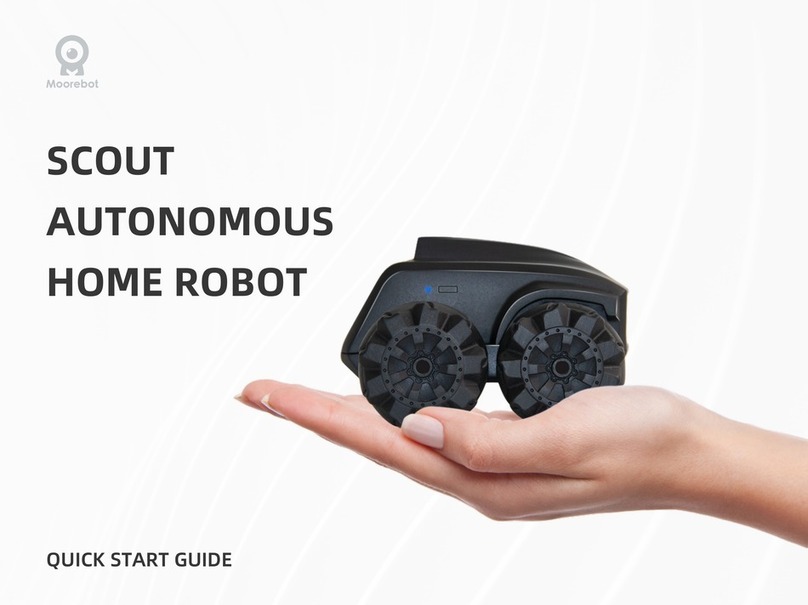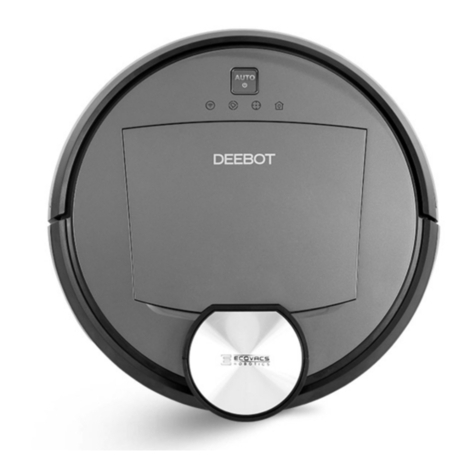
Contents
Chapter 1 Installing Robot Components ........................................................................................................................ 1
1.1 Preparing a Proper Environment for Installation................................................................................................... 1
1.1.1 Ambient Temperature and Humidity .............................................................................................................. 1
1.1.2 Vibration......................................................................................................................................................... 1
1.1.3 Connecting the Robot Unit and Robot Controller .......................................................................................... 1
1.1.4 Installation Environment of the Robot Unit ................................................................................................... 2
1.2 Mounting the Robot Unit ...................................................................................................................................... 4
1.2.1 Transporting the Floor-Mount Type ............................................................................................................... 4
1.2.2 Transporting the Overhead-Mount Type (HSS-G series) ............................................................................... 6
1.2.3 Securing the Robot Unit ............................................................................................................................... 10
1.2.4 Grounding the Robot Unit ............................................................................................................................ 11
1.3 Installing the Robot Controller............................................................................................................................ 11
1.4 Electrical Wiring and Air Piping of the Robot Unit ............................................................................................ 12
1.4.1 Notes for Wiring and Piping Through a Hollow in the Z-axis Shaft ............................................................ 12
1.4.2 Reference Drawings for Stays that Clamp Wiring and Piping...................................................................... 13
1.4.3 Prohibition Against Use of Mechanical End Bolts and Mechanical Stoppers for Wiring or Piping............. 14
1.4.4 Piping of Source Air ..................................................................................................................................... 15
1.5 Installing the Flange Kit (Option) ....................................................................................................................... 16
1.6 Engineering-design Notes for Robot Hands........................................................................................................ 16
1.7 Moving Each Axis with Motor Power OFF in Emergency Stop .........................................................................17
1.8 Locking Out the Power Switch ........................................................................................................................... 19
Chapter 2 Customizing Your Robot .............................................................................................................................. 20
2.1 What Is Customization? ...................................................................................................................................... 20
2.2 Modifying Software Motion Limits to Define New Motion Space.....................................................................21
2.2.1 What Is a Software Motion Limit? ............................................................................................................... 21
2.2.2 Software Motion Limits (Factory defaults) .................................................................................................. 22
2.2.3 Changing Software Motion Limits ............................................................................................................... 24
2.2.4 Precautions When Changing the Software Motion Limits ........................................................................... 25
2.2.5 Procedure for Changing the Software Motion Limits .................................................................................. 25
2.3 Changing Mechanical Ends to Define New Restricted Space............................................................................. 28
2.3.1 What is a Mechanical End Change? ............................................................................................................. 28
2.4 Performing CALSET .......................................................................................................................................... 29
2.4.1 What Is CALSET?........................................................................................................................................ 29
2.4.2 Preparation for CALSET.............................................................................................................................. 30
2.4.3 Performing CALSET.................................................................................................................................... 32
2.5 Setting Control Set of Motion Optimization ....................................................................................................... 38
2.6 Setting Robot Installation Conditions ................................................................................................................. 38
